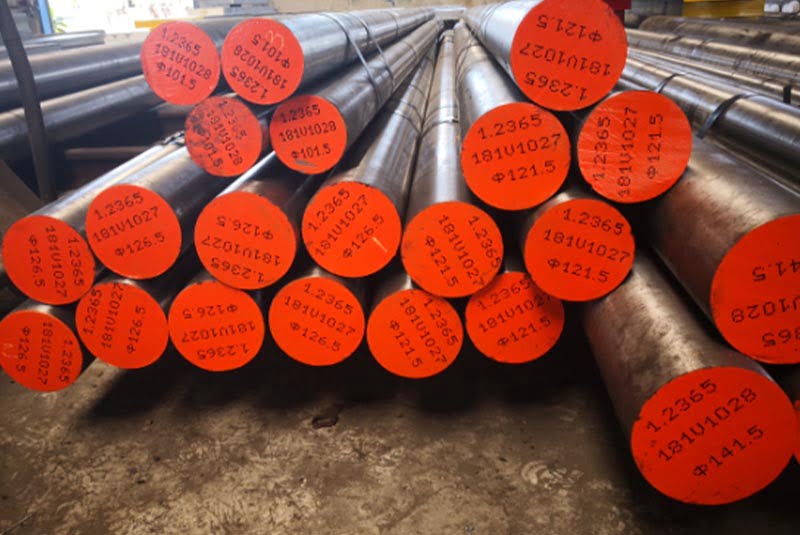Introduction

Tool steel stands as a cornerstone material in various industries, renowned for its exceptional properties and versatility. In this comprehensive guide, we delve into the world of tool steel, exploring its properties, different types, and wide-ranging applications. Whether you’re a seasoned professional or a newcomer to the field, this guide serves as your definitive resource for understanding and harnessing the power of tool steel.
Understanding Tool Steel: Properties and Characteristics
Tool steel encompasses a diverse range of alloys designed to exhibit high hardness, wear resistance, and toughness. At its core, tool steel boasts exceptional strength and durability, making it an indispensable material for applications subjected to heavy wear and abrasion. Key properties of tool steel include:
Hardness: Tool steel exhibits high hardness, enabling it to withstand repeated impact and abrasive forces without deformation.
Wear Resistance: Tool steel offers excellent wear resistance, prolonging tool life and enhancing productivity in machining operations.
Toughness: Despite its hardness, tool steel maintains sufficient toughness to withstand shock loading and prevent fracture or chipping.
Heat Resistance: Certain grades of tool steel possess elevated heat resistance, enabling them to retain hardness and strength at high temperatures.
Types of Tool Steel: A Comprehensive Overview
Tool steel encompasses a diverse array of alloy compositions tailored to specific applications and performance requirements. The most common types of tool steel include:
H10 Tool Steel
H10 tool steel is a chromium hot-work steel known for its excellent heat resistance and toughness. With its high chromium content, H10 offers exceptional wear resistance and thermal stability, making it suitable for applications involving high-temperature operations such as hot forging and die casting. H10 tool steel is prized for its ability to retain hardness and strength at elevated temperatures, ensuring long tool life and reliable performance in demanding environments.
H11 Tool Steel
H11 tool steel is another hot-work steel renowned for its exceptional heat resistance and toughness. With a composition similar to H10, H11 exhibits superior wear resistance and thermal stability, making it well-suited for applications subjected to high temperatures and abrasive wear. Commonly used in die casting, extrusion, and hot stamping operations, H11 tool steel offers reliable performance and durability in the most demanding hot-work applications.
O1 Tool Steel
O1 tool steel, also known as oil-hardening steel, is a versatile cold-work steel prized for its excellent wear resistance and dimensional stability. With its high carbon and chromium content, O1 offers superior edge retention and toughness, making it ideal for applications requiring cutting, stamping, and forming dies. O1 tool steel is commonly used in the production of knives, punches, and precision components, where sharpness, durability, and dimensional accuracy are paramount.
| Property | Description |
|---|---|
| Steel Type | O1 Tool Steel |
| Also Known As | Oil-Hardening Steel |
| Composition | High carbon and chromium content |
| Main Characteristics | – Excellent wear resistance – Superior edge retention – High toughness – Good dimensional stability |
| Common Applications | – Cutting tools – Stamping dies – Forming dies – Knives – Punches – Precision components |
Applications of Tool Steel: From Manufacturing to Machining

Tool steel finds extensive use across a multitude of industries, playing a pivotal role in manufacturing, machining, and tooling applications. Common applications of tool steel include:
Injection Molding: Tool steel is utilized to manufacture injection molds for producing plastic components with precision and efficiency.
Metal Stamping: Tool steel dies are employed in metal stamping operations to shape and form sheet metal into desired configurations.
Cutting Tools: Tool steel serves as the primary material for cutting tools such as drills, end mills, and taps, enabling precision machining in various materials.
Die Casting: Tool steel dies are integral to the die casting process, facilitating the production of metal components with intricate shapes and tight tolerances.
Conclusion
In conclusion, tool steel stands as a cornerstone material in modern manufacturing and machining industries, offering unparalleled performance and versatility. From its exceptional properties to its diverse range of types and wide-ranging applications, tool steel plays a pivotal role in shaping the world around us. By understanding the properties, types, and applications of tool steel, individuals and businesses alike can harness its full potential to achieve excellence and innovation in their respective fields.
FAQs
What are the main categories of tool steel?
Tool steel is typically categorized into cold work, hot work, and high-speed steel, each tailored to specific temperature and wear conditions.
What factors should be considered when selecting tool steel?
When selecting tool steel, factors such as hardness, wear resistance, toughness, and heat resistance should be taken into account, along with specific application requirements.
Can tool steel be recycled?
Yes, tool steel is recyclable and can be reprocessed into new products through various recycling methods, contributing to sustainability and resource conservation.
How can tool steel be heat treated to optimize its properties?
Tool steel can undergo heat treatment processes such as annealing, quenching, and tempering to achieve desired hardness, toughness, and dimensional stability.
